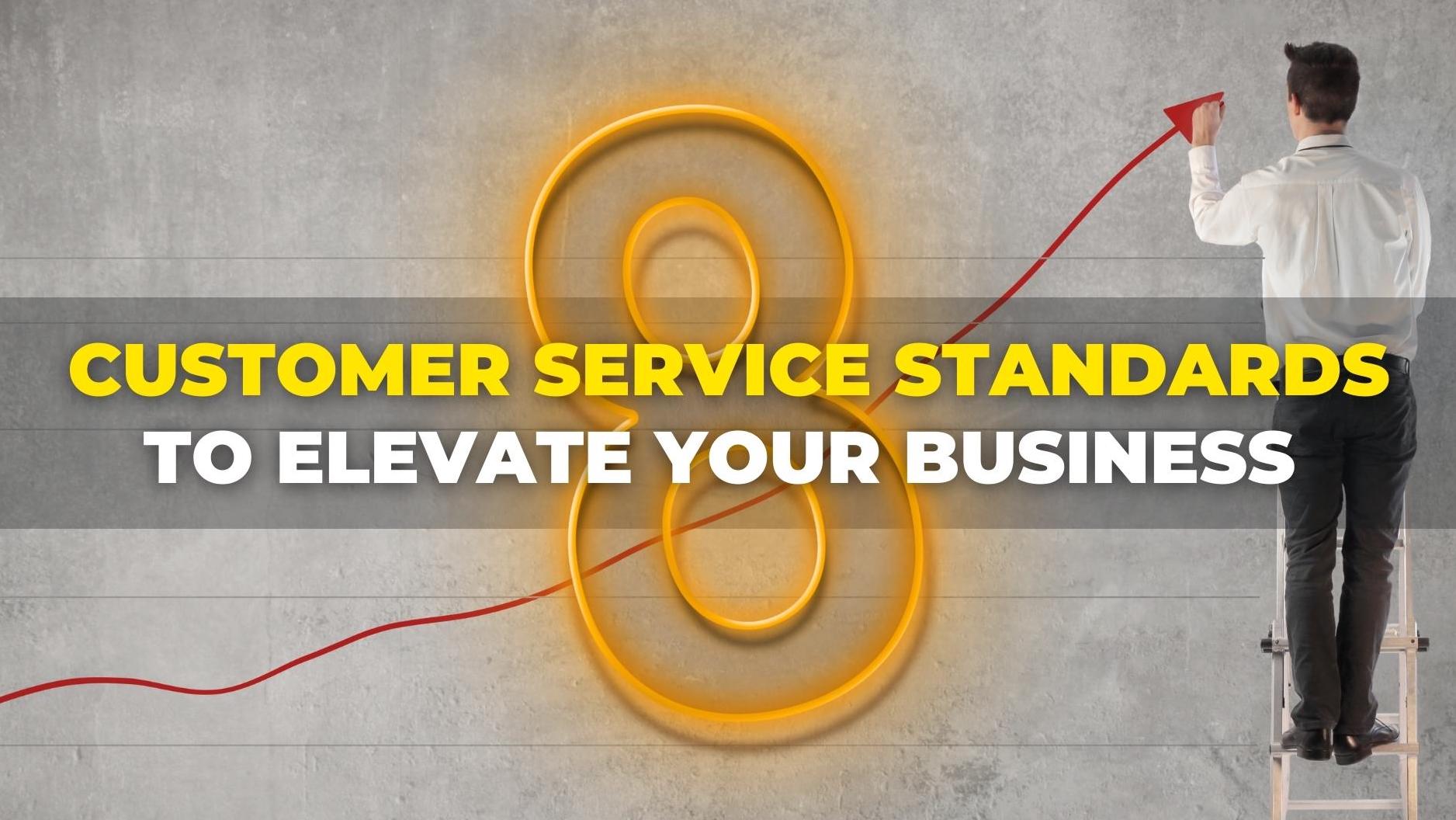Customer service is a key differentiator in today’s competitive business landscape. Set customer service standards and regularly refine them to delight your audience and boost brand loyalty.
As service channels expand and evolve, customer expectations change along with them. To keep your audience satisfied and build brand loyalty, you need to set clear customer service standards that emphasise speed, thoroughness, and kindness.
What are customer service standards?
Customer service standards are benchmarks for customer satisfaction. Support teams measure a variety of performance KPIs – like first-response time and wrap-up time – to assess whether they’re providing high-quality experiences and meeting customer expectations.
It’s important to define these standards so your agents understand the level of customer service they need to deliver daily. Often, buyers base their expectations on stellar service provided by other companies. It doesn’t matter if those businesses are competitors or not. When consumers experience excellent customer service, the bar is raised across the board. Your support team must meet those expectations and always be ready to adapt.
8 customer service quality standards for your business
Customer service guidelines and standards vary from team to team. It all depends on your company’s values and specific goals. That being said, most support teams use these customer service quality standards as benchmarks.
1. A fast average resolution time
Regardless of channel, consumers expect speedy customer service interactions. You’ll not only need to provide immediate responses but also fast resolutions.
Track whether your team is problem-solving quickly with average resolution time, which measures how long it takes to close a newly opened ticket.
2. An agent occupancy rate of 75 to 85 percent
Occupancy helps you gauge burnout by measuring how hard your agents are working. It includes the time spent interacting with customers and any necessary follow-up tasks once the interaction ends.
Typically, an occupancy rate that surpasses 85 percent means your agents are at risk. You either need to hire more staff or find ways to improve efficiency.
3. A high cross-sell or upsell close rate
You may not think of your support team as a sales channel, but your agents can be the push existing customers need to buy another product or make an upgrade. 47 percent of business owners say customer service increases their ability to cross-sell.
Say a potential customer calls your support team to ask about two bicycles you have in stock. If they decide to purchase one at the end of the exchange, the agent might suggest a helmet to go with it. Base your team performance benchmark on the number of closed sales per number of tickets your agents handle in a month.
4. A low Customer Effort Score
Convenience is king in today’s world. So, you want to make life as simple as possible for your customers. Especially considering that 96 percent of customers with a high-effort service interaction become less loyal compared to four percent with a low-effort experience.
Customer Effort Score (CES) helps measure how easy it is for consumers to accomplish a task, whether that’s finding your customer support phone number or getting connected to the right agent.
High CES scores can drag down other important metrics, such as customer satisfaction score and Net Promoter Score®, so keep customers happy by addressing negative feedback quickly.
5.An average customer satisfaction score of 80 percent
As you may have guessed, a customer satisfaction (CSAT) score measures how happy people are with your business, products, or services. It helps you identify customer pain points and gives you an opening to ask for specific feedback.
To measure CSAT, send customer surveys that ask “on a scale of 1 (very unsatisfied) to 5 (very satisfied), how would you rate your overall satisfaction with the service you received?” Similar to CES surveys, your CSAT survey should also include an open-ended question to better understand what people liked (or disliked) about their experience.
6.A high Net Promoter Score
Satisfied customers aren’t necessarily loyal customers. Net Promoter Score℠ (NPS®) helps you determine the percentage of customers most likely to stick with you.
NPS® asks a single question: “On a scale of 1 (not likely) to 10 (extremely likely), how likely are you to recommend us to someone you know?” Based on their answers, respondents are placed into one of three categories: Detractors, Passives, Promoters.
Like CSAT and CES surveys, your NPS® survey can include an optional open-ended question that prompts the customer to give a reason for their score.
7.A wrap-up timer of 10 minutes or less
When an agent ends a conversation with a customer, their work isn’t done. They still need to record details about the interaction and complete any promised follow-up actions – like sending resources to the customer or requesting a replacement product.
This period is known as wrap-up time, or the amount of time it takes an agent to complete post-interaction tasks. While agents shouldn’t rush through these activities, their wrap-up time should be somewhat short. A slow follow-up could leave the customer unhappy and result in long wait times for other customers in the queue.
8.A high net sentiment score
Online conversations and comments reveal what customers think of your brand. Net sentiment scores help you evaluate whether these mentions skew positive or negative.
Not all online conversations mention customer service, but support teams can heavily influence the direction of these interactions. While a perfect net sentiment score of 100 percent is highly unlikely, a month-over-month improvement indicates your agents’ efforts are paying off.
How to improve customer service standards
Due to the pandemic, 61 percent of consumers say they now have higher customer service standards. The pressure is on for support teams to rise to the occasion. Here are some tips for moving your performance metrics in the right direction and continuing to nurture customer relationships.
1.Create a memorable on-hold experience
It’s no secret that customers hate long wait times. Some refuse to wait on hold for even one minute, so be sure to offer a callback service.
2.Train and assess agents regularly
To meet your customer service standards, agents need the right skills to excel in each of your target areas. Set up customer service training based on the benchmarks you’re hoping to meet.
3.Develop self-service resources
Offering customer self-service will free agents from routine inquiries, giving them more time to focus on complex customer issues. Plus, 89 percent of shoppers will spend more with companies that empower them to find answers independently. Clearly, self-service is a win-win and an effective way to raise your customer service standards.
4.Install an easy-to-navigate IVR menu
Busy call centers often struggle to meet customer service standards around speed. Interactive voice response systems (IVRs) can help. IVR software automatically welcomes callers with a series of options that guides them toward a solution. Customers respond to prompts with their voice or phone touch screen.
5.Invest in conversational customer service
Conversational customer service enables consumers to use their preferred channel and allows agents to see the entire interaction history in a unified workspace. Instead of siloed conversations that start and stop every time a customer reaches out (or switches channels), each interaction becomes part of a larger conversation that carries over a lifetime of interactions with the company.
Reward agents who uphold high customer service standards
Once you’ve set expectations for your team, reward those who meet their goals, and develop improvement plans for those who don’t. Empowered agents will work harder to provide excellent customer service.
Use customer service software like Zendesk to track key metrics and ensure you’re delivering on customer expectations.
Source : Zendesk Blog
Learn more about Customer Service
- For more information, Zendesk prices with special promotions, call 02 030 0066.
- support@demeterict.com







